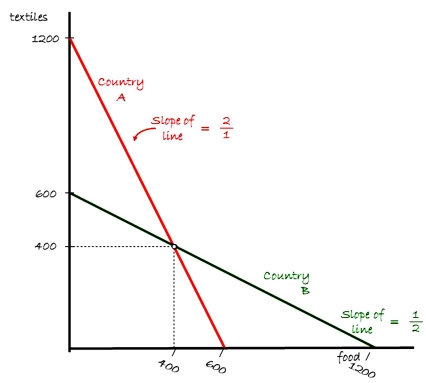Multiple Choice
Countries A and B currently consume 400 units of food and 400 units of textiles each and currently do not trade with one another. The citizens of country A have to give up one unit of food to gain two units of textiles, while the citizens of country B have to give up one unit of textiles to gain two units of food. Their production possibilities curves are shown.  Suppose that trade is allowed and that the international exchange rate between food and textiles is one-for-one. The increased consumption following trade will be
Suppose that trade is allowed and that the international exchange rate between food and textiles is one-for-one. The increased consumption following trade will be
A) an increase of 400 units of food and 400 units of textiles.
B) an increase of 1,200 units of food and 1,200 units of textiles.
C) an increase of 800 units of food and 800 units of textiles.
D) there are no gains from trade in this example.
Correct Answer:

Verified
Correct Answer:
Verified
Q1: Since the end of World War I,the
Q11: Privatization<br>A)has spurred a tremendous increase in cross-border
Q69: Although the world economy is much more
Q70: Country A can produce 10 yards of
Q71: What is the relative price of wheat
Q72: Suppose that trade occurs. Each country completely
Q75: What is the price of beer without
Q77: What is the relative price of a
Q78: Suppose that Great Britain is a major
Q82: Since its inception the euro has brought